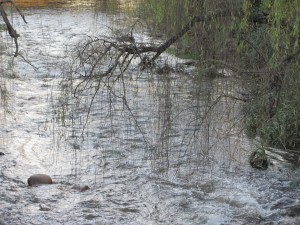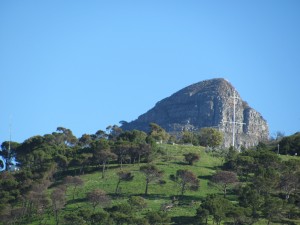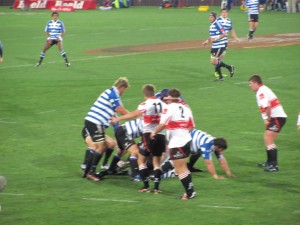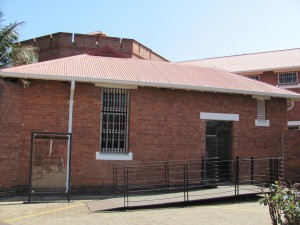It’s hard to believe I’ve come to my last full day in South Africa. After ten weeks full of travel, interviews, workshops, sightseeing, and coffee shop exploring, I’m now getting ready to board a plane back home to Chicago.The last week has been spent doing some reflecting, meeting with a few more contacts, and trying to soak up as much of South Africa as possible. I want to wrap up my travel blog with some of these final reflections. To start, since my trip was roughly divided into three parts in three cities, I want to reflect individually on each city.
Cape Town: Arriving in Cape Town, I had no idea what to expect apart from my general knowledge of South Africa.
I did not know whom I would meet, what I would see, or how easy it would be to adjust to new surroundings. I think Cape Town was the ideal city to start my travels (I picked it—as opposed to starting in Jo’burg—because I would arrive in Cape Town after the last soccer match was held there, making accommodation easier). Cape Town is very tourist-oriented with lots of things to see and do outside of meeting with contacts; this made it very easy to slide into South African life. The city is also very easy to get around: most places were accessible on foot; an easy cab or train ride made anywhere else a quick trip. By the time I left Cape Town, I felt like I had a working knowledge of South Africa and that I had begun to sink my teeth into the questions I was looking to answer with regards to my research.
Pietermaritzburg: In terms of tourist activity, Pietermaritzburg was much smaller, so there was significantly less to do in terms of sightseeing (particularly without my own transportation).
However, there was plenty to do here in terms of my project: attending classes, conversations and meetings, and most importantly going out to different workshops with the Ujamaa Centre. When asked why I had chosen this project in this country, my answer was always some version of this: Reading Gerald West’s work on Contextual Bible Studies grabbed my interest and excitement, and I wanted to learn more about it. But unlike many ways of reading the Bible, studying this method requires an understanding of context; it cannot solely be represented in a book or an article. So, I wanted to see and learn about Contextual Bible Study off of the pages. After a month in Maritzburg, I feel like I got a great taste for the method and how it is done in practice and how this informs the academic writing done on it. I left feeling like I had seen what I was hoping to see; however, I also feel like there is still a lot more I could have done if I had more time. I think this is always a good way to feel.
Johannesburg: Johannesburg has been an interesting experience. In Cape Town, I felt like I was learning about the context in which I wanted to explore Biblical Studies. In Pietermaritzburg, I was digger deeper into the actual study of the Bible.
In Jo’burg, I felt like most of my meetings were returning me to the “first step,” yet with the knowledge of what I had experienced previously. At times this was difficult because it feels like taking a step back. At the same time, I have met with some interesting people; stepping back has helped me to start reflecting on my experiences. Jo’burg has been lots of fun, and through the help of friends and contacts, I’ve managed to see a good bit. But transport in this city is very difficult without a car: I can walk to places in the area I am staying (basically, restaurants and bookshops), but to get anywhere out of Melville, I need a ride. You would expect that in such a place, taxis would be thriving; but the taxi system is very disorganized, and I have often waited twenty minutes for a cab to come. A small complaint for an otherwise great trip, but if I come to Jo’burg again, I would make arrangements to have a car in advance.
So, where am I in terms of my project? I feel like I have seen what I hoped to see; there’s a lot more I would like to have done, but this requires more time.
I see what I’ve left undone not as a failure but as a reason to return! As I’ve demonstrated on the blog, I’ve found interesting new questions to bring to biblical texts, and I have seen and heard many interesting interpretations of the Bible. I’ve come to understand more fully West’s method of Contextual Biblical Studies. As I return home, one of the major questions that I am considering is how this method, which has been formed uniquely by the South African context, can be applied to my context in Chicago. I’m looking forward to considering this more, especially once I’m settled into my own context.
Finally, how has this trip impacted me personally? I’ve certainly learned a lot about myself, particularly about how I settle and adapt when I am on the move in an unfamiliar context. As I’ve moved out of my normal boundaries and borders, I’ve discovered which borders are important to me and which borders I need to cross more often. I’ve also refreshed myself: until this summer, I had not taken a real break from school (since I spent last summer in intensive Greek); ten weeks is the longest I’ve been away from Chicago since moving there. Breaking my routine has allowed me to become reinvigorated for the next year; being out of the classroom has made me ready to re-enter it. This summer has been a great and fun learning experience; I’m sad to leave (though already plotting the next adventure!) but also excited to return home.
















